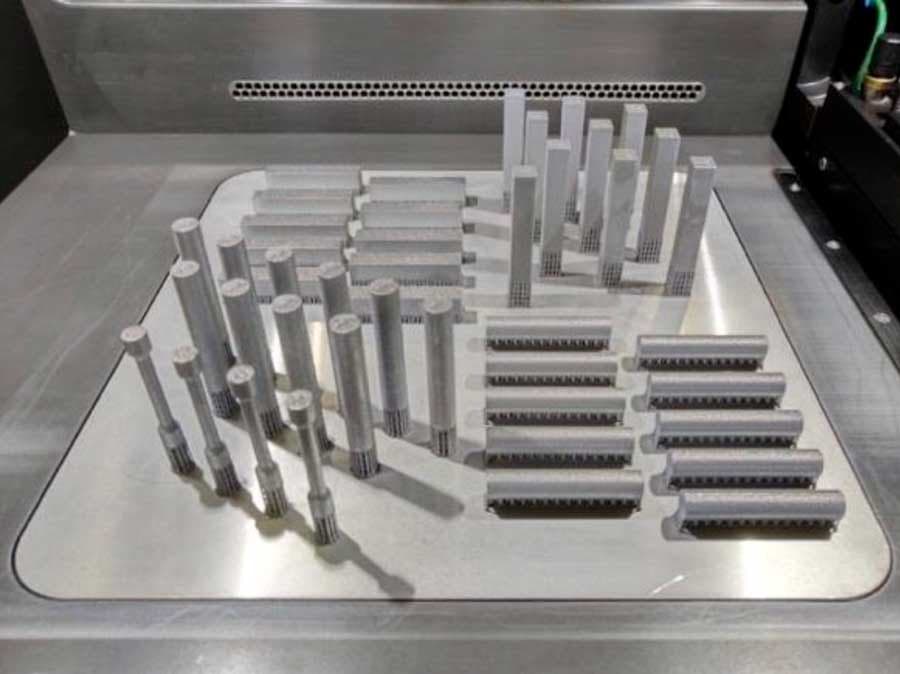As part of the Ad-Proc-Add project accompanied by ecoplus Mechatronics-Cluster, the Institute for Production Engineering and Photonic Technologies at TU Wien investigated optimal process parameters for powder bed printing processes to produce dense and high-quality components. The research team developed and validated a reliable, cost-effective method for parameter optimization, as well as an approach for parameter transformation that enables the transfer of SLM process parameters between different machines. The results obtained were made available to the public.
Powder bed printing processes offer many benefits but also pose several challenges in producing components with high material density while minimizing the risk of microcracks that could result in component failure during the product’s lifespan. To tackle the difficulties posed by powder bed printing processes, Dipl.-Ing. Dimitrii Nikolaev and Dipl.-Ing. Ismail Yavuz, under the supervision of Univ.-Prof. Dr. Friedrich Bleicher, studied how different process parameters affect additive process technology. They specifically examined the effects of factors such as scan speed, build rate, laser power, and component orientation. This study was carried out within the inter-company cooperation project Ad-Proc-Add.
The research team used a defined design of experiments (DoE) and a test part geometry (image) to examine various powder materials, process parameters, and post-processing technologies. The goal was to develop a reliable, cost-effective, and machine-independent method for optimizing parameters for existing or new powder materials. This method involves a multi-stage iterative investigation of the relative density of printed samples and aims to optimize to at least 99%. While further optimization was found to be less reliable, the workflow can be applied in a reduced form to evaluate machine and powder performance or provide a quick assessment of potential parameter optimization.
In addition to parameter optimization, the team developed a parameter transformation approach that is capable of transferring SLM process parameters from one machine type or manufacturer to another. The transformation approach takes into account the essential differences in equipment and process environment to achieve a similar appearance of the isolated weld seam and provide conversion coefficients for selected parameters. This enables adaptation to two different process situations, making a further parameter optimization study possible.
Both methods were validated in studies carried out for parameter optimization within the scientific and industrial consortium of the AdProcAdd project. In addition to parameter optimization, it was confirmed that intermediate treatment of the workpiece with hot isostatic pressing represents a considerable opportunity for increasing the relative density of LPBF additively manufactured components.
The knowledge gained supports system and service providers in developing new products with enhanced functionalities, and enables end-users to implement ASM process chains with higher productivity, as well as increased economic and ecological efficiency.
The digital compendium containing the complete project information can be downloaded free of charge here. More information is also available on the project website: www.ad-proc-add.eu.
Subscribe to AM Chronicle Newsletter to stay connected: https://bit.ly/3fBZ1mP
Follow us on LinkedIn: https://bit.ly/3IjhrFq
Visit for more interesting content on additive manufacturing: https://amchronicle.com


